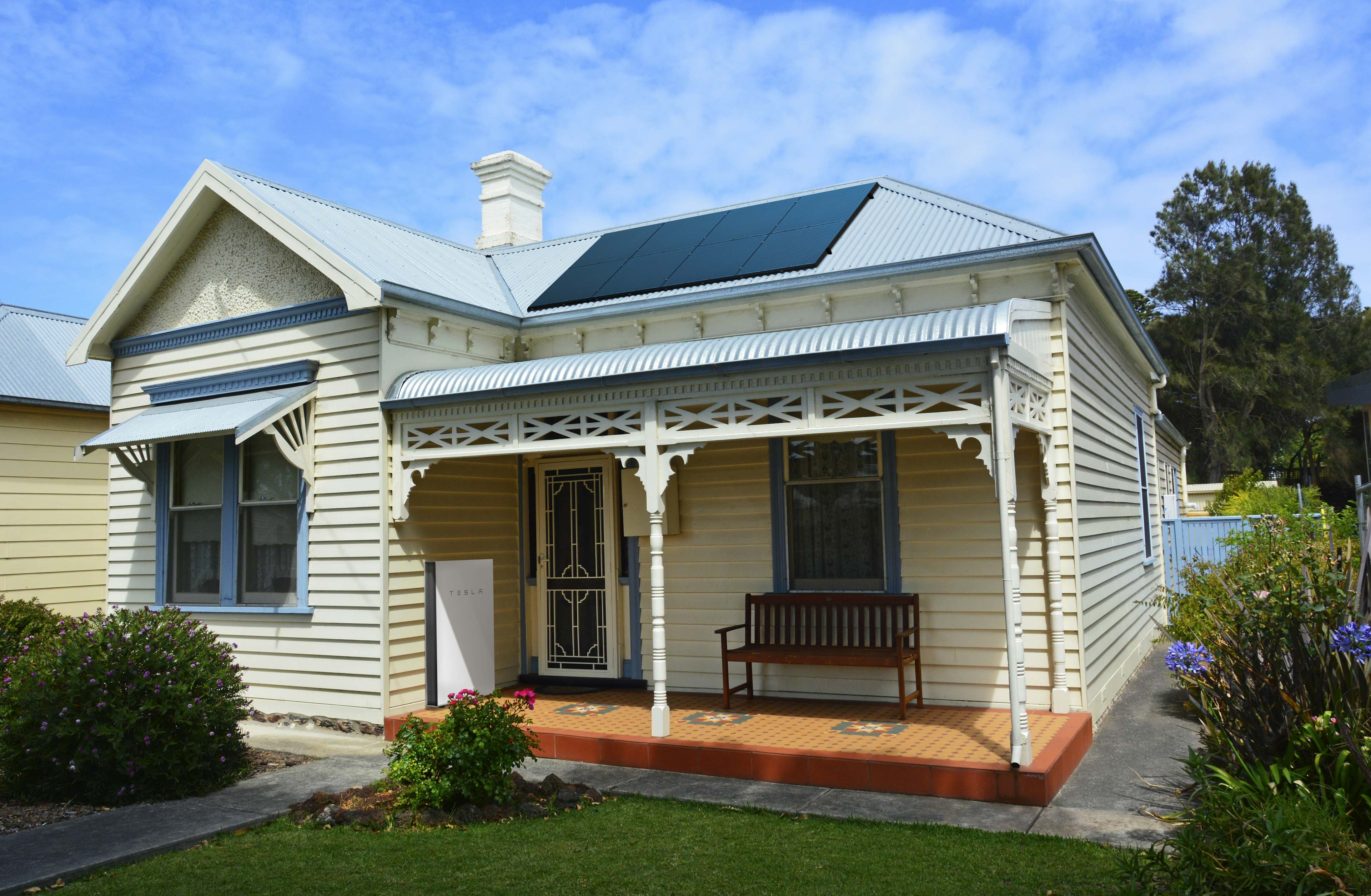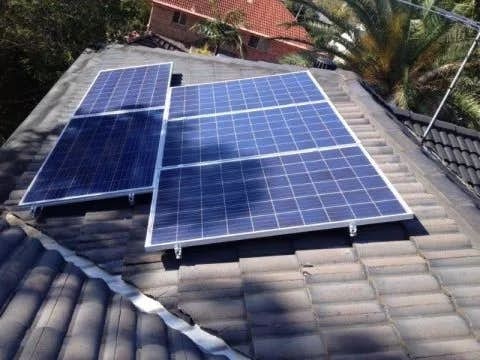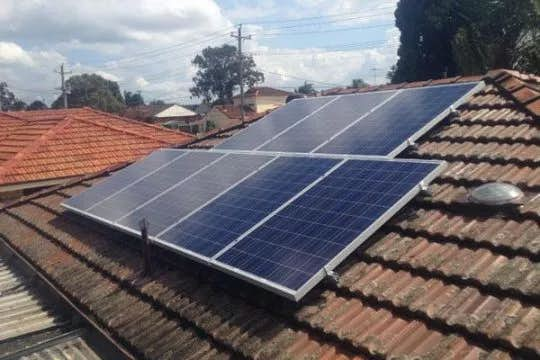Solar
Solar
Battery Storage
Battery Storage
Battery Storage
EV Charger
EV Charger
EV Charger
Heartbeat
Smart Energy Manager
Heartbeat
About Us
About Us
Learn
Featured Articles
Sizing Up A System
Finance & Rebates
Learn
Now servicing New South Wales, Victoria, Queensland and South Australia
Request PricingSolar panel affordability is thriving in Sydney. It means most homes are choosing larger systems (around 8-10kW) to reap the maximum benefit. But, if you have limited roof space, a 2kW system might still be enough. It's important to evaluate if this smaller size is the right fit for your needs.

Here's why a 2kW system might not be the best choice for everyone:
Limited Savings: While a 2kW system (typically 6-7 panels) can help you save on your electricity bill, it might only translate to around $200 per quarter. This benefit depends on using most of the generated power during the day.
Slower Payback: With the drop in solar panel prices, larger systems of high-quality brands can see a payback period of under 3 years. A 2kW system, on the other hand, might take 4-6 years to pay for itself.
But don't write off the 2kW system just yet! This article will discuss the advantages of a smaller system and provide you with the information you need to decide if a 2kW system is the perfect fit for your Sydney home.
In Sydney, a typical 2kW solar system generates around 8 kWh of electricity each day (on average) throughout the year according to CEC Guidelines. You'll get more power during sunny summer days and less in winter.
It's important to remember that solar panels produce power during daylight hours. The actual amount of electricity you get will follow a bell curve pattern as shown in the illustration below:

With peak production around midday and lower production in the mornings and evenings. This curve can also vary depending on weather conditions.
A 2kW system might be suitable if your daily power usage (excluding hot water) is around 16 kWh. This estimate will result in a quarterly bill of roughly $300. This assumes average daytime usage aligns with solar production.
Solar panels produce the most power when directly facing the sun. For north-facing panels in Sydney, this occurs for about 4 hours in the middle of the day. As the graph shows, clouds can significantly reduce output. In summer, well-placed panels can generate power until nearly 8 pm.
In Sydney's summer, flat panels might be optimal due to the high sun angle. However, a 20-degree tilt might offer better year-round performance with peak output in spring and autumn.
Many solar installers offer system monitoring tools that allow you to track your solar power generation. Solar retailers like 1KOMMA5° offer Enphase Micro Inverter Systems with detailed monitoring features.
Advancements in technology have led to more affordable high-efficiency panels, like the 405W REC Solar panel. This allows installers to achieve a 2kW system with fewer panels (e.g., 5 panels) in Sydney.
Since most string inverters come in 3kW models, 2kW systems often use microinverters, like Enphase. Each panel with a microinverter operates independently. With this feature, solar panels can be in different orientations and angles. This is ideal for roofs with patchy shade.
One common strategy involves placing some panels north-facing and others west-facing. With panels facing different directions, you get more power throughout the day. This west-facing placement is beneficial with time-of-use billing with higher electricity rates between 2 pm and 8 pm.
As one of the leading installers of Enphase microinverter systems, the 1KOMMA5° design team can help you utilise your roof space if you plan to switch to solar.
A string inverter system is a great choice for your home if:
Your roof faces north of east or west and gets full sun all day (no shade).
You have space for 6 or 7 solar panels (around 1.7 meters by 1 meter each).

String inverters are cost-effective for setups that meet these conditions. However, they work best when all the panels receive uniform sunlight. Even a little shade on one panel can affect the entire system's output.
This system typically needs at least 6 panels connected in a string (a series connection). While some manufacturers offer 2kW inverters, most good quality Europe-manufactured inverters start at 3kW.
To get the most out of a 3kW inverter, we recommend having 6 or 7 panels. This ensures enough power to run the inverter efficiently.
If your roof meets the criteria but only has space for 6 or 7 panels, we'll help you find a good quality 3kW string inverter. We also offer a competitive price on two additional panels to complete your system.
A 2kW system facing north in sunny Sydney can generate around 2,850 kWh of electricity per year. According to the Clean Energy Council, that's roughly 7.8 kWh a day. But based on our experience with thousands of Sydney systems, we believe this might even be a bit on the low side!

The real benefit? Savings on your electricity bills! Here's a breakdown:
Time-of-use billing: If you're on a time-of-use plan and pay an average of 30 cents per kWh, a 2kW system could save you up to $850 annually on your electricity bills. This amount could be even higher with westward-facing panels.
Flat rate billing: You could save around $750 a year even with a flat rate.
Feed-in Tariffs: Your system's excess solar energy automatically feeds back to the grid. In return, your energy provider often offers a feed-in tariff (FIT) – a credit on your bill – typically ranging from 5c to 13c per kWh.
Here's a general idea of what a 2kW system might cost. A basic system with Trina Vertex 390W panels and an SMA inverter typically starts around $4,500. If you're interested in the latest high-efficiency panels and want to monitor power output from each panel, expect to pay between $5,000 and $6,000. Over 80% of our installations now include panel-level monitoring powered by Enphase.
These prices are after factoring in a government incentive of roughly $935 and include full installation and grid connection, excluding metering costs.
While we've provided these estimates, our final price is always fully inclusive and confirmed after a site inspection by our system designers. For a more personalised quotation, you can contact our solar experts today.
With solar prices dropping, many customers choose 3kW or 5kW systems even for moderate electricity use. Why? Here's the scoop:
Government Incentives: Taking advantage of these programs can make larger systems even more affordable.
Future-proof your home: Planning for a growing family or a more energy-intensive lifestyle? A bigger system lets you run appliances like pool pumps and air conditioners on solar power.
Battery ready: Thinking about adding solar batteries later? A larger solar array (usually at least 5kW) lays the groundwork for future battery storage. Not all systems are easily expandable, so discuss battery-ready options with your installer to ensure a smooth transition when you're ready.
There's a lot to consider when switching to solar power. But with a solar expert's help, you can choose a power solution that works for your home. You can request a quotation below to get started with solar energy.
Our solar experts will help you find the right system for your home.

Get all the right information before installing a solar power system for your home.
